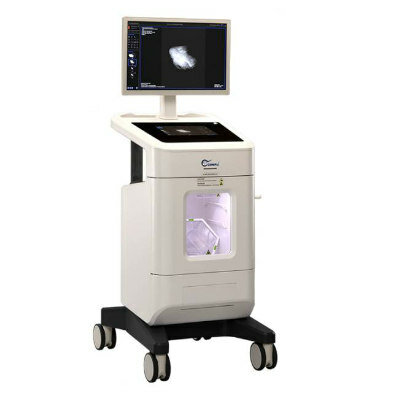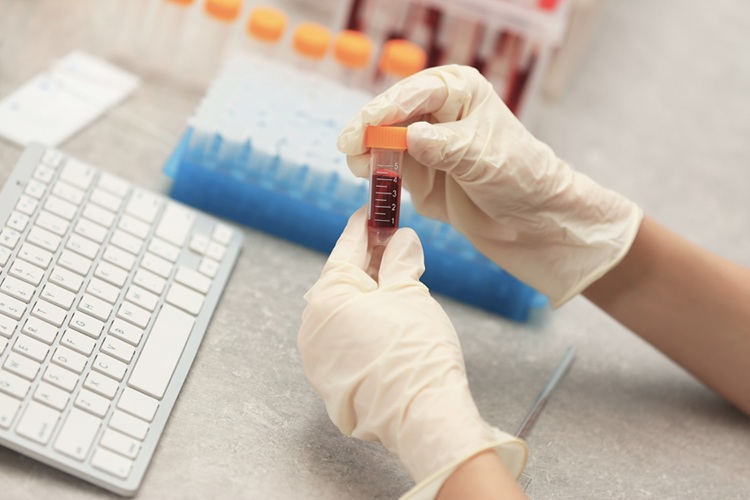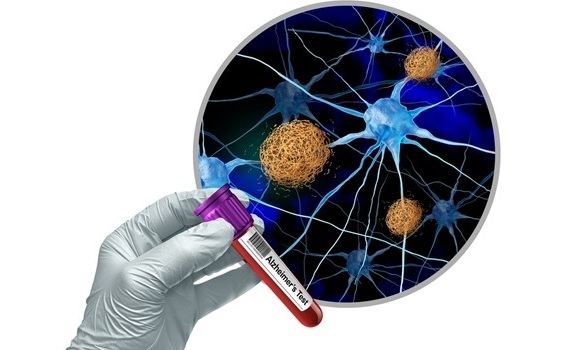Ultra-Sensitive Rapid Test Evaluated for Malaria
|
By LabMedica International staff writers Posted on 05 Apr 2018 |
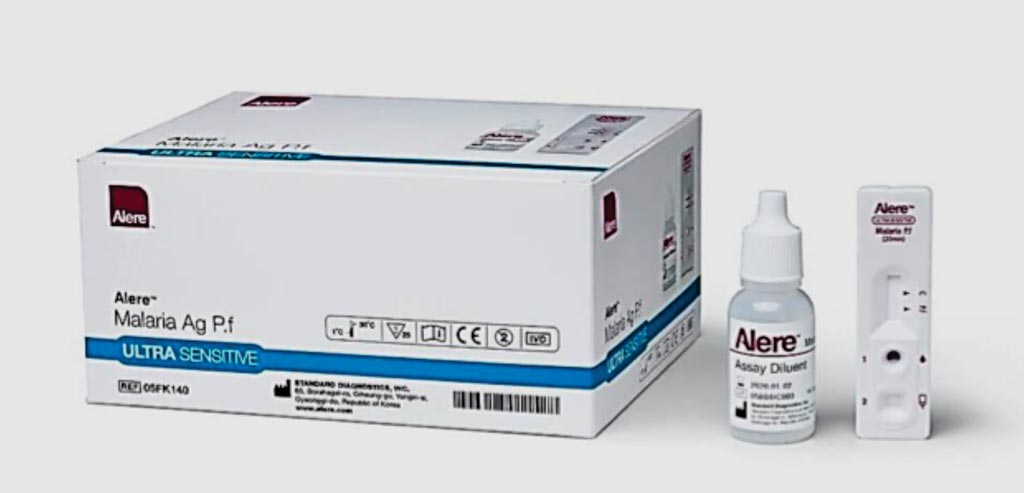
Image: The Malaria Ag P.f test is 10 times more sensitive than current malaria rapid diagnostic tests for the detection of Plasmodium falciparum HRP-II antigen (Photo courtesy of Alere).
In low prevalence regions, subpatent Plasmodium falciparum malaria infections have become an issue of increasing concern. As malaria endemic countries shift from control to elimination, the proportion of low-density P. falciparum infections increases.
Current field diagnostic tools, such as microscopy and rapid diagnostic tests (RDT), with detection limits of approximately 100 to 200 parasites/µL (p/µL) and 800 to1000 pg/mL histidine-rich protein 2 (HRP2), respectively, are unable to detect subpatent infections.
Scientists at Diagnostics Program, PATH (Seattle, WA, USA) tested two commercial available RDTs. The two RDTs are immunochromatographic membrane strip tests, but differ in that the ultra-sensitive (uRDT) one uses biotinylated and carboxyl-modified latex fragment antibodies (FAbs) and polystreptavidin bound to the test line to detect P. falciparum-specific HRP2 in whole blood. The uRDT test requires 5 µL of whole blood specimen and the blood is applied to the sample port in the test followed by application of four drops of assay diluent. Twenty minutes after application of the specimen, the result is interpreted from the result window.
The uRDT used was the Alere Malaria Ag P.f RDT and was compared to the BIOLINE Malaria Ag P.f RDT. The team reported that the uRDT detected dilutions of P. falciparum recombinant strains, as well as cultured strains, diluted in whole blood down to 10 to 40 pg/mL HRP2, depending on the protein tested. The uRDT specificity was 100% against 123 archived frozen whole blood samples. The commercial SD-RDT and uRDT detected pfhrp2 positive strains down to 49 and 3.13 p/µL, respectively. The pfhrp2 deletion strains were detected down to 98 p/µL by both tests.
The authors concludes that the performance of the uRDT was variable depending on the protein, but overall showed a greater than 10-fold improvement over the SD-RDT. The uRDT also exhibited excellent specificity and showed the same cross-reactivity with HRP3 as the SD-RDT. Together, the results support the uRDT as a more sensitive HRP2 test that could be a potentially effective tool in elimination campaigns. The study was published on March 17, 2018, in the Malaria Journal.
Related Links:
Diagnostics Program, PATH
Current field diagnostic tools, such as microscopy and rapid diagnostic tests (RDT), with detection limits of approximately 100 to 200 parasites/µL (p/µL) and 800 to1000 pg/mL histidine-rich protein 2 (HRP2), respectively, are unable to detect subpatent infections.
Scientists at Diagnostics Program, PATH (Seattle, WA, USA) tested two commercial available RDTs. The two RDTs are immunochromatographic membrane strip tests, but differ in that the ultra-sensitive (uRDT) one uses biotinylated and carboxyl-modified latex fragment antibodies (FAbs) and polystreptavidin bound to the test line to detect P. falciparum-specific HRP2 in whole blood. The uRDT test requires 5 µL of whole blood specimen and the blood is applied to the sample port in the test followed by application of four drops of assay diluent. Twenty minutes after application of the specimen, the result is interpreted from the result window.
The uRDT used was the Alere Malaria Ag P.f RDT and was compared to the BIOLINE Malaria Ag P.f RDT. The team reported that the uRDT detected dilutions of P. falciparum recombinant strains, as well as cultured strains, diluted in whole blood down to 10 to 40 pg/mL HRP2, depending on the protein tested. The uRDT specificity was 100% against 123 archived frozen whole blood samples. The commercial SD-RDT and uRDT detected pfhrp2 positive strains down to 49 and 3.13 p/µL, respectively. The pfhrp2 deletion strains were detected down to 98 p/µL by both tests.
The authors concludes that the performance of the uRDT was variable depending on the protein, but overall showed a greater than 10-fold improvement over the SD-RDT. The uRDT also exhibited excellent specificity and showed the same cross-reactivity with HRP3 as the SD-RDT. Together, the results support the uRDT as a more sensitive HRP2 test that could be a potentially effective tool in elimination campaigns. The study was published on March 17, 2018, in the Malaria Journal.
Related Links:
Diagnostics Program, PATH
Latest Microbiology News
- Viral Load Tests Can Help Predict Mpox Severity
- Gut Microbiota Analysis Enables Early and Non-Invasive Detection of Gestational Diabetes
- Credit Card-Sized Test Boosts TB Detection in HIV Hotspots
- Fecal Metabolite Profiling Predicts Mortality in Critically Ill Patients
- Portable Molecular POC System Rules Out UTIs in Just 35 Minutes
- POC Lateral Flow Test Detects Deadly Fungal Infection Faster Than Existing Techniques
- Rapid Diagnostic Test Slashes Sepsis Mortality by 39%
- Blood Culture Assay Enhances Diagnostic Stewardship Through Targeted Panel Selection
- Real-Time Genome Sequencing Detects Dangerous Superbug Causing Hospital Infections
- Diagnostic Test Accurately Detects Colorectal Cancer by Identifying Microbial Signature in Gut Bacteria
- Rapid Bedside Test Predicts Sepsis with Over 90% Accuracy
- New Blood Test Detects Up to Five Infectious Diseases at POC
- Molecular Stool Test Shows Potential for Diagnosing TB in Adults with HIV
- New Test Diagnoses Bacterial Meningitis Quickly and Accurately
- Handheld Device Delivers Low-Cost TB Results in Less Than One Hour
- New AI-Based Method Improves Diagnosis of Drug-Resistant Infections
Channels
Clinical Chemistry
view channel
New Clinical Chemistry Analyzer Designed to Meet Growing Demands of Modern Labs
A new clinical chemistry analyzer is designed to provide outstanding performance and maximum efficiency, without compromising affordability, to meet the growing demands of modern laboratories.... Read more
New Reference Measurement Procedure Standardizes Nucleic Acid Amplification Test Results
Nucleic acid amplification tests (NAATs) play a key role in diagnosing a wide range of infectious diseases. These tests are generally known for their high sensitivity and specificity, and they can be developed... Read moreMolecular Diagnostics
view channel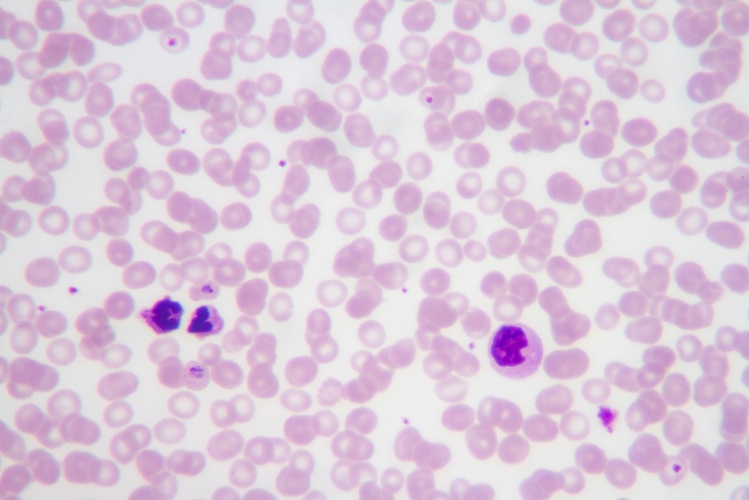
Testing Blood Samples for Proteins Can Reveal Malaria Severity
Malaria is a life-threatening disease that can rapidly deteriorate a patient's condition, making it difficult to predict which individuals are at risk of severe outcomes. It remains a challenge to diagnose... Read more
Genetic Testing Benefits Critically Ill Adults
Genetic disorders are often underdiagnosed in adults, despite their significant role in causing critical illnesses, especially in intensive care units (ICUs). It has long been believed that the likelihood... Read moreHematology
view channel
Disposable Cartridge-Based Test Delivers Rapid and Accurate CBC Results
Complete Blood Count (CBC) is one of the most commonly ordered lab tests, crucial for diagnosing diseases, monitoring therapies, and conducting routine health screenings. However, more than 90% of physician... Read more
First Point-of-Care Heparin Monitoring Test Provides Results in Under 15 Minutes
Heparin dosing requires careful management to avoid both bleeding and clotting complications. In high-risk situations like extracorporeal membrane oxygenation (ECMO), mortality rates can reach about 50%,... Read moreImmunology
view channel
New AI System Uncovers Hidden Cell Subtypes to Advance Cancer Immunotherapy
To produce effective targeted therapies for cancer, scientists need to isolate the genetic and phenotypic characteristics of cancer cells, both within and across different tumors. These differences significantly... Read more
Evolutionary Clinical Trial to Identify Novel Biomarker-Driven Therapies for Metastatic Breast Cancer
Metastatic breast cancer, which occurs when cancer spreads from the breast to other parts of the body, is one of the most difficult cancers to treat. Nearly 90% of patients with metastatic cancer will... Read more
Groundbreaking Lateral Flow Test Quantifies Nucleosomes in Whole Venous Blood in Minutes
Diagnosing immune disruptions quickly and accurately is crucial in conditions such as sepsis, where timely intervention is critical for patient survival. Traditional testing methods can be slow, expensive,... Read morePathology
view channel
Novel Method Tracks Cancer Treatment in Cells Without Dyes or Labels
Multiple myeloma is a blood cancer that affects plasma cells in the bone marrow, leading to abnormal protein production, weakened immunity, and organ damage. Traditional methods for evaluating myeloma... Read more
New AI-Based Method Effectively Identifies Disease Phenotypes Using Light-Based Imaging
Precision medicine, where treatment strategies are tailored to a patient's unique disease characteristics, holds great promise for cancer therapy. However, identifying disease phenotypes, which are critical... Read more
AI Accurately Predicts Genetic Mutations from Routine Pathology Slides for Faster Cancer Care
Current cancer treatment decisions are often guided by genetic testing, which can be expensive, time-consuming, and not always available at leading hospitals. For patients with lung adenocarcinoma, a critical... Read moreTechnology
view channel
Multifunctional Nanomaterial Simultaneously Performs Cancer Diagnosis, Treatment, and Immune Activation
Cancer treatments, including surgery, radiation therapy, and chemotherapy, have significant limitations. These treatments not only target cancerous areas but also damage healthy tissues, causing side effects... Read more
Ultra-Sensitive Biosensor Based on Light and AI Enables Early Cancer Diagnosis
Cancer diagnosis is often delayed due to the difficulty in detecting early-stage cancer markers. In particular, the concentration of methylated DNA in the bloodstream during the early stages of cancer... Read moreIndustry
view channel
QuidelOrtho and BÜHLMANN Collaborate on Gastrointestinal Biomarker Tests
QuidelOrtho Corporation (San Diego, CA, USA) and BÜHLMANN Laboratories AG (Schönenbuch, Switzerland) have announced the availability of the BÜHLMANN fCAL turbo and fPELA turbo assays on QuidelOrtho's... Read more









